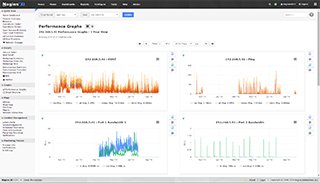
Custom CGI Headers and Footers
Need Help Configuring Nagios?
Our tech support team is happy to help you with any questions you might have. Contact us on our online support forum at https://support.nagios.com/forum/
Nagios XI Makes Monitoring Easier:
Nagios XI is the easy-to-use, enterprise version of Nagios that features:
- Web-Based Configuration provides advanced configuration features
- Monitoring Wizards make it easy to monitor new devices, applications, and services
- Customizable Dashboards allow for per-user customization
- Integrated Performance Graphs provide trending and capacity planning information
- Advanced Reports provide data insight and exporting capabilities
- Data Visualizations enable powerful analysis of patterns and problems
- Nagios Core Import functionality makes it easy to migrate from Nagios Core
- ... and many other features
Download a free 30-day trial to give Nagios XI a spin.
Inquire today and let our Quickstart team help you get started with Nagios XI
 Up To: Contents
Up To: Contents
 See Also: Information on the CGIs
See Also: Information on the CGIs
Introduction
If you're doing custom installs of Nagios for clients, you may want to have a custom header and/or footer displayed in the output of the CGIs. This is particularly useful for displaying support contact information, etc. to the end user.
It is important to note that, unless they are executable, custom header and footer files are not pre-processed in any way before they are displayed. The contents of the header and footer include files are simply read and displayed in the CGI output. That means they can only contain information a web browser can understand (HTML, JavaScript, etc.).
If the custom header and footer files are executable, then the files are executed and their output returned to the user, so they should output valid HTML. Using this you can run your own custom designed CGI to insert data into the nagios display. This has been used to insert graphs from rrdtool using ddraw and command menus into the nagios display pane. The execuable customer header and footer files are run with the same CGI environment as the main nagios CGI, so your files can parse the query information, authenticated user information, etc. to produce appropriate output.
How Does It Work?
You can include custom headers and footers in the output of the CGIs by dropping some appropriately named HTML files in the ssi/ subdirectory of the Nagios HTML directory (i.e. /usr/local/nagios/share/ssi).
Custom headers are included immediately after the <BODY>> tag in the CGI output, while custom footers are included immediately before the closing </BODY> tag.
There are two types of customer headers and footers:
- Global headers/footers. These files should be named common-header.ssi and common-footer.ssi, respectively. If these files exist, they will be included in the output of all CGIs.
- CGI-specific headers/footers. These files should be named in the format CGINAME-header.ssi and CGINAME-footer.ssi, where CGINAME is the physical name of the CGI without the .cgi extension. For example, the header and footer files for the alert summary CGI (summary.cgi) would be named summary-header.ssi and summary-footer.ssi, respectively.
You are not required to use any custom headers or footers. You can use only a global header if you wish. You can use only CGI-specific headers and a global footer if you wish.
